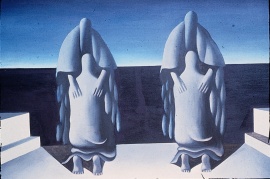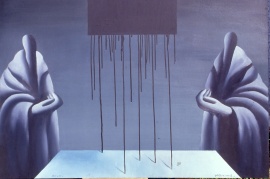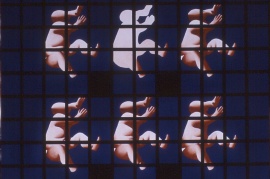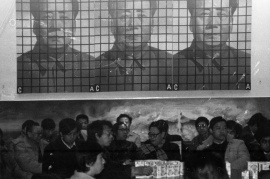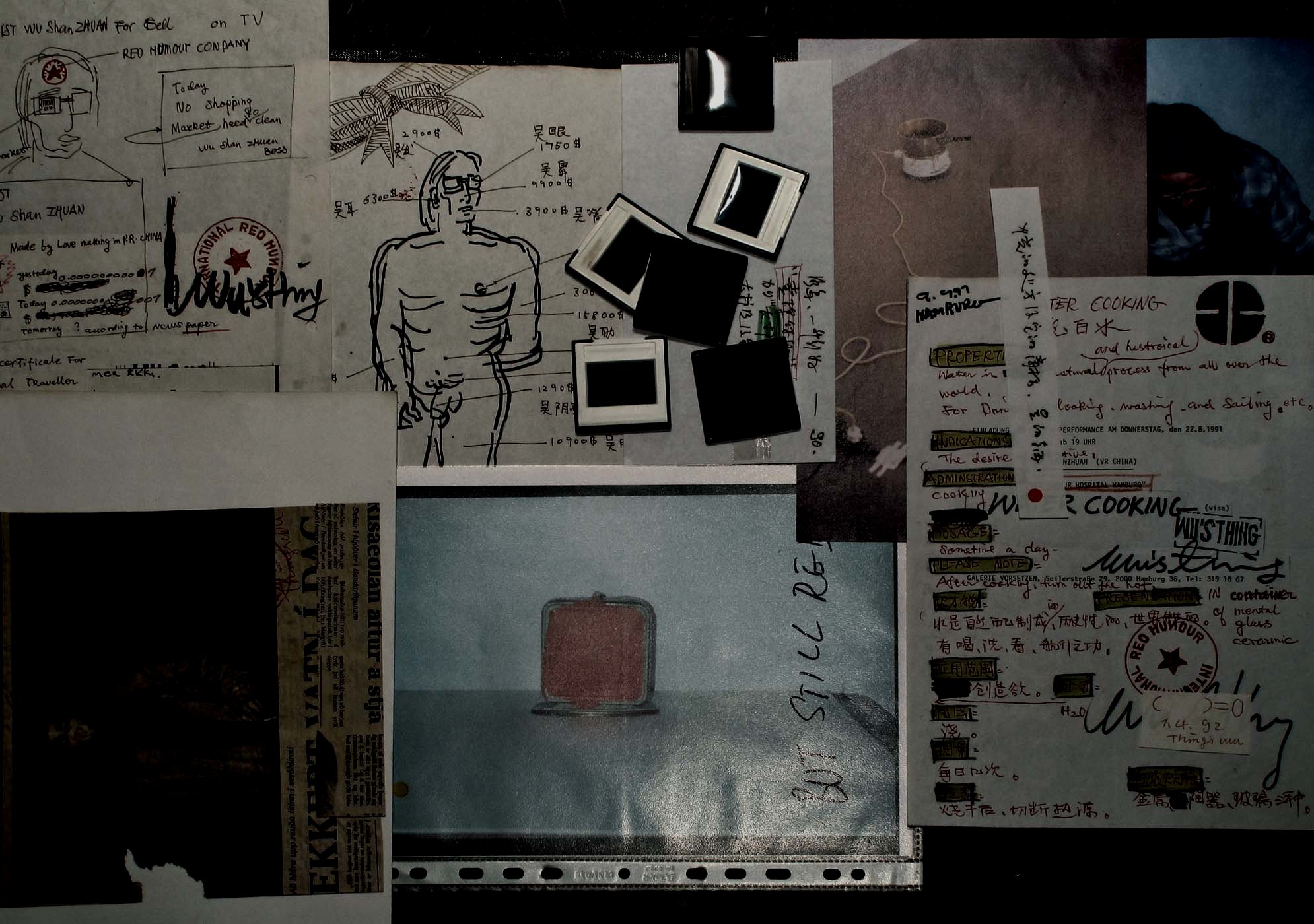Wang Guangyi 2007-11-04
Cave Café, 798,
Beijing

“At one o’clock in the afternoon, I would begin painting. Then around four o’clock, I’d begin writing. After writing it was time for dinner, so this time in the afternoon was perfect for writing. I could smoke a cigarette and write some letters. Peculiarly, as I wrote, the characters would get larger and larger. I’ve always been like this. In the beginning, perhaps I wrote very small, and then the characters just grew. Actually, if you’re writing small characters, two pages are enough, but when you’re writing large characters, you might need five or six pages. My letters had the feeling of being very thick. I also used a lot of exclamation points…so much underlining, so many exclamation points!”
Biography:
Wang Guangyi (b. 1957, Harbin, Heilongjiang Province) is an artist and currently lives and works in Beijing.
In 1984, Wang graduated from the Department of Oil Painting at the Zhejiang Academy of Fine Arts (now the China Academy of Art). After graduating, he returned to his hometown of Harbin where he established the Northern Art Group with friends who shared his interest in art, literature and philosophy. One of the leading experimental artists in the 1980s, Wang helped organize the 'Large-Scale Slide Exhibition of New Wave Art', which took place at the Zhuhai Conference in 1986, and in 1989, his painting series Mao Zedong MAO was exhibited at the ‘China/Avant-Garde Exhibition’ at the National Art Museum of China in Beijing.
In 1990, Wang began teaching at the Hubei College of Technology in Wuhan. In the same year, he began creating his oil painting series The Great Criticism, which was exhibited at the ‘Cocart-International Invited Exhibition of Post-Pop Art’ (Milan, Italy, 1991). His work was also published on the cover of Flash Art magazine (1991) and in Beijing Youth News (Beijing qingnianbao) (March 22, 1991). This series was subsequently exhibited at the ‘China/Avant-Garde Exhibition’ in Germany (Haus der Kulturen der Welt, Berlin, 1993), as well as in ‘China’s New Art, Post-1989’ (Hong Kong Arts Centre, 1993) and at the 45th Venice Biennale (1993).
















